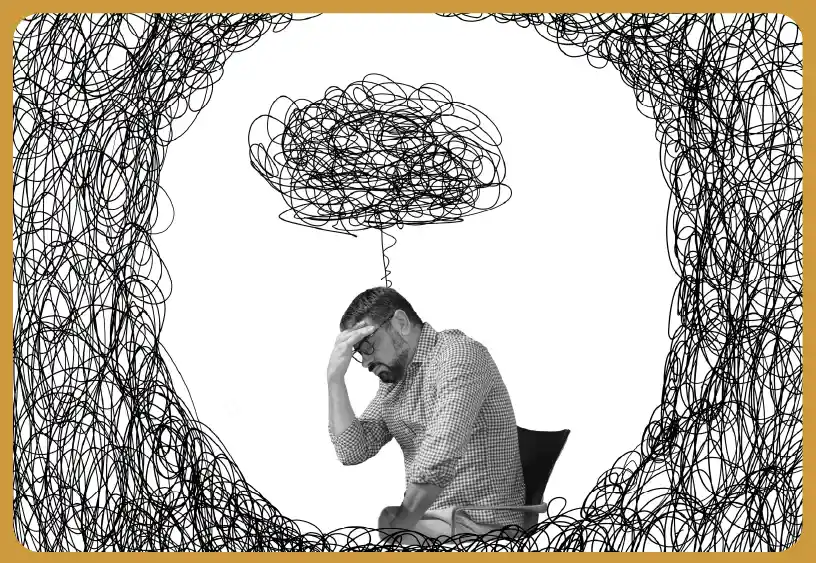
What is the most common kind of compulsive behavior?
"Habits are at first cobwebs, then cables." - Spanish Proverb
Compulsive habits may be like invisible shackles controlling everyday activities and ensnaring people in an anxious and relieving loop. Many people discretely battle these habits while feeling alone and misinterpreted. Often resulting in great stress, this battle influences both personal and professional life.
Managing obsessive habits starts with knowing most often occurring ones. Acknowledging these trends helps people to get treatment and create plans to release their grasp. Professional advice and doable solutions can open the path to a more harmonious and quiet existence.
What is a Compulsive Behavior?
A compulsive behavior is an action that a person feels driven to do over and over again because of an intense thought. People usually do these things to ease the stress or discomfort that the habit causes. For example, someone might keep checking the door to make sure it's locked or wash their hands too much out of fear of getting germs. These habits might help for a short time, but they usually end up taking up too much time and getting in the way of daily life. Over time, the obsession and compulsion create a loop that is hard to break. This causes more stress and affects general health. To successfully manage conditions like OCD, it is important to recognize and deal with repetitive behaviors.

What is the Most Common Kind of Compulsive Behavior?
The most prevalent type of compulsive behavior among individuals with conditions like OCD is repeated checking. This behavior typically arises from intrusive thoughts and intense fears related to safety, security, or the completion of tasks. For many, the compulsion to check manifests in various forms that can significantly disrupt daily life and cause considerable distress.
Lock Checking
One typical indication of constant checking is lock checking. People might feel as though they have to continuously keep making sure their windows and doors are tightly closed. Those who do this typically return more than once to ensure, perhaps even after leaving the house. This constant craving for comfort can transform ordinary employment into a protracted, demanding habit interfering with daily living.
Appliance Checking
Another common form is appliance checking, in which people make sure that all of their home machines are off all the time. This can include checking stoves, ovens, irons, and anything else that could be dangerous if left on. This urge comes from the fear of hurting someone or starting a fire, which makes people check and recheck too much, even when there's no sign of a problem.
Checking Work and Assignments
Checking work and assignments is usual in school and the workplace. Students and pros may have to go over their work more than once to make sure it is correct and complete. This could mean going over emails, papers, or tasks more than once before turning them in, even if you know the work is probably right. These kinds of actions lose time, make people more anxious, and make them less productive.
Health-related checking
People also undertake health-related checking, which is the ongoing search of their body for indicators of disease or injury. This might entail routinely looking for changes in moles, measuring vital indicators like heart rate repeatedly, or visiting a doctor often to find comfort. Concerning health problems causes stress that drives this demand, which often results in unnecessary doctor visits and increased health concerns.
Checking things over and over again has rather negative consequences. These behaviors momentarily assist in alleviating anxiety, but they worsen the underlying dread and maintain the cycle of compulsive behavior. The routines may grow more difficult with time, hence you might have to check more regularly and for longer periods of time to obtain the same level of security. This can strain relationships, make it difficult to perform at work or at school, and aggravate general mental health issues.
How to Overcome Compulsive Behaviors?
Understanding the triggers and patterns that drive obsessive behaviors—such as frequent checking in conditions like OCD—helps one overcome them. Many times, people get great anxiety brought on by particular events, ideas, or feelings. To momentarily overcome their nervousness, they start repeating actions including checking locks or appliances.
Developing mindfulness and awareness is vital if one is to escape these trends. Through mindfulness practices, people may see their ideas and emotions free from judgment, therefore enabling the recognition of the beginning of obsessive thinking and the need to act compulsively. Cognitive-behavioral approaches based on this increased awareness help one challenge obsessive ideas. People might lessen the need to participate in obsessive activities by challenging the veracity of these ideas and changing their viewpoint to a more balanced one.
Gradual exposure treatment, sometimes referred to as Exposure and Response Prevention (ERP), is essential for breaking through obsessive tendencies. Under this therapy method, one methodically exposes oneself to circumstances that cause anxiety while avoiding obsessive behavior. Under the direction of a therapist, people learn to withstand anxiety and worry without turning to their typical rituals, therefore progressively desensitizing themselves to anxiety-inducing events. Important components of this process are establishing reasonable objectives and celebrating personal development. Beginning with little steps and acknowledging successes along the road helps to develop new, better habits.
Seeking expert assistance from a psychologist or psychiatrist specializing in OCD therapy is vital. These experts can educate good coping mechanisms, offer organized help, and, if needed, write prescriptions for SSRIs to properly control symptoms. Including supporting networks like friends, relatives, or support groups also helps one get understanding and encouragement all through the rehabilitation process. Combining these techniques into a complete treatment plan and engaging in self-care activities to lower stress can help people take back control over their lives and show notable changes in general well-being.

Conclusion
Stopping the obsessive behaviors connected with disorders like OCD needs a multifaceted approach that handles both the worry that causes them and the behavior patterns that keep them going. People can reduce and control their compulsive behaviors by learning about their triggers, practicing awareness, questioning their obsessive thoughts, and going through slow exposure therapy. Getting professional help and connecting with people who can support you are both very important steps on the road to healing. People can regain control of their lives, improve their general health, and feel more free from compulsions if they consistently follow
- Share














